People who convey voices from the sea
People who convey voices from the sea
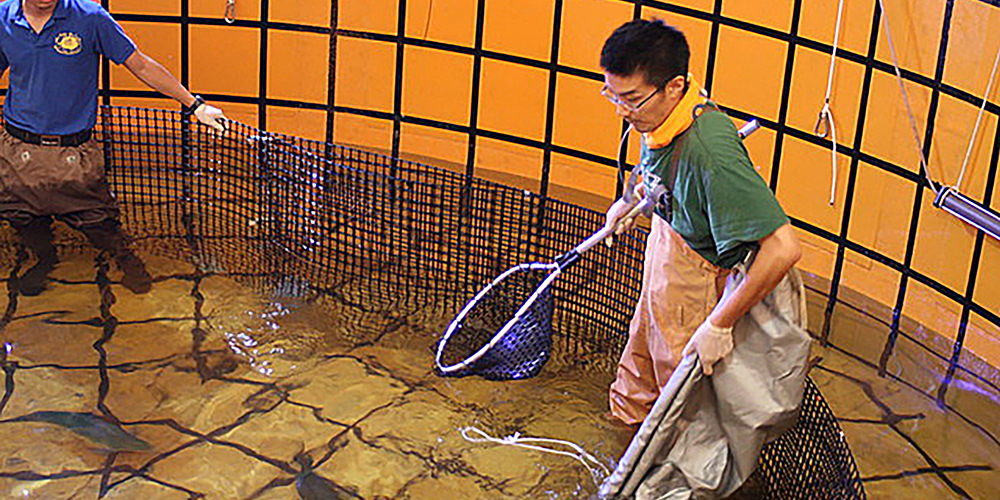
What is the driving force?
The feeling and the power of sea creatures
Faculty of Marine Life Science Department of Marine Bioresources Associate Professor Ryosuke Yazawa
What is the driving force?
The feeling and the power of sea creatures
Faculty of Marine Life Science Department of Marine Bioresources Associate Professor Ryosuke Yazawa
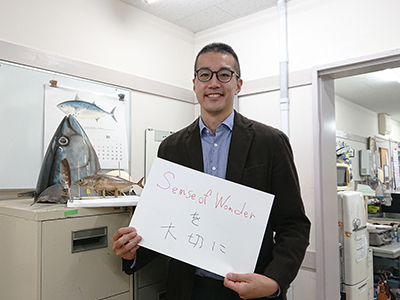
Biography
Ryosuke Yazawa(Ryosuke Yazawa)
Belongs to the Department of Marine Bioresources.
After completing graduate school at Tokyo University of Fisheries, University of Victoria (Canada),
After working as a postdoctoral researcher at Tokyo University of Marine Science and Technology, he became an assistant professor at Tokyo University of Marine Science and Technology in 2011.
Incumbent since 2016.He is a fisheries doctor.
- Q What kind of classes do you teach?
↓
- I am in charge of fish dissection in comparative physiology and comparative physiology experiments.
First-year students of the Department of Marine Bioresources visit the Hydrosphere Science Field Education Center and Tateyama Station (Tateyama City, Chiba Prefecture) for a practical training session called the Freshman Seminar.
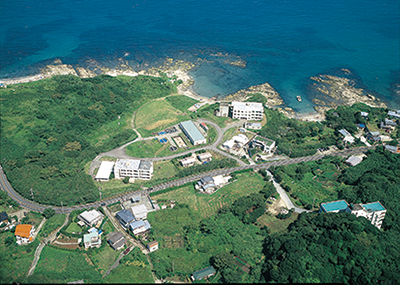 Tateyama Station
Tateyama Station - Q Where do you usually do your research?
↓
- The laboratory is located on the Shinagawa campus of Tokyo University of Marine Science and Technology, but the breeding and experiments of the fish used in the tuna surrogate parent fish technology are carried out at the Tateyama Station.
It is located near the ocean, so you can use seawater for breeding, and there are tanks for migratory fish and facilities for raising newly born larvae, so it is an environment where you can devote yourself to research.
Some experiments are conducted at the Shinagawa Campus, but there are many that can only be done at the Tateyama Station. - Q Why did you decide to enter Tokyo University of Fisheries (the predecessor of Tokyo University of Marine Science and Technology)?
↓
- I was interested in sea creatures and wanted to become a researcher.
The rest is my father's influence.His father is also a researcher, and I've seen him go sampling in various places for work, and sometimes he takes me there.When I was thinking about going to university, I did some research and found Tokyo University of Fisheries (then and now Tokyo University of Marine Science and Technology) and took the entrance exam.

- Q What was your school life like?
↓
- I remember how interesting the practical training class was.
Various teachers used to teach more freely and with more diversity than they do now, but I think they are still benefiting from each other.After that, I devoted myself to club activities (basketball club).I think I was a pretty serious student.
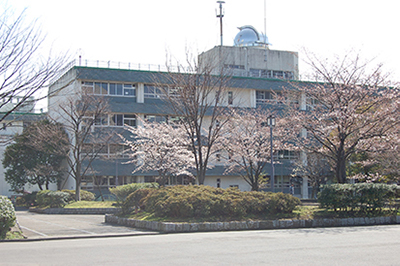 Shinagawa Campus
Shinagawa Campus - Q What kind of research did you do when you were a student?
↓
- When I was a student, I studied at a laboratory called the Genome Science Laboratory, which used genetic engineering techniques to develop vaccines and research immunity.However, when I entered the laboratory in my senior year, I wanted to research "transgenic (gene introduced) fish" that no one in the laboratory was doing!I was doing research on the theme of creating disease-resistant fish using transgenics.To be honest, it was difficult to proceed with the experiment because there was no senior researcher of transgenic fish in the laboratory I belonged to. They recognized what I wanted to do and gave me the opportunity to learn from many professors who are cutting edge in the field, so I was able to advance my research.
- Q Was it difficult to assemble an experimental system that no one had done in the laboratory?
↓
- I am very grateful to my laboratory professor for allowing me to study the techniques of other laboratories, and as a result, I was able to absorb not only transgenic techniques but also know-how and knowledge outside the laboratory.
But yes, yes.Rather than doing experiments while being taught by seniors in the laboratory, I make mistakes and try to come up with new ideas...I have already made a lot of mistakes.
However, at the bottom of my heart is that I like new things, and I think I have a stronger desire to try various things.I learn a lot from my mistakes, and I think I still make countless mistakes in my research. - Q What kind of research are you doing now?
↓
- Currently, we are developing technology for the stable production of good seedlings, such as those that are delicious and easy to grow, using a technique called surrogate broodstock technology.I am also focusing my research on chub mackerel and mackerel, which were selected as surrogate parents in the development of tuna surrogate parent fish technology.
The chub mackerel and the speckled mackerel look very similar, and they live in the same place and spawn at the same time.
Therefore, chub mackerel and mackerel do not mix and exist as different species in the natural world.
Of course, there are other examples of fish that become infertile when crossed with other fish.
However, when I was researching, I noticed that sometimes there are individuals that are not sterile even though they are the offspring of chub mackerel and mackerel.and.
Now I'm trying to collect mackerel from all over Japan and try to solve this mystery. - Q: Looking ahead to 2030, what kind of research would you like to do with incoming students?
↓
- I believe that if I continue my current research, it will be useful, for example, in the production of stable protein sources and the sustainable use of marine resources.
However, I would like to work together with incoming students to think about the issues and technologies that will be needed in the future, 50 and 100 years from now, and create the seeds to solve them. .
I'm sure they'll come up with ideas that I don't have, and I'm excited to think that they might give birth to new technologies.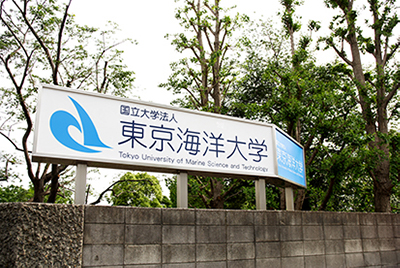 Main gate of Shinagawa Campus
Main gate of Shinagawa Campus






